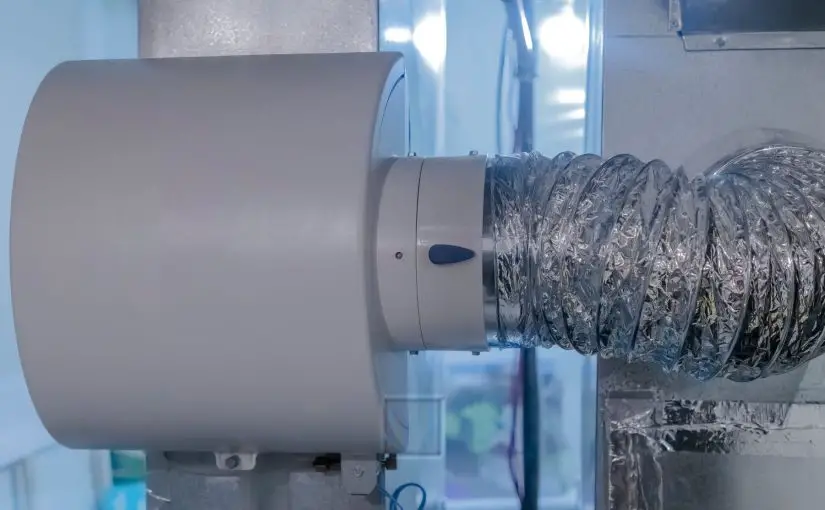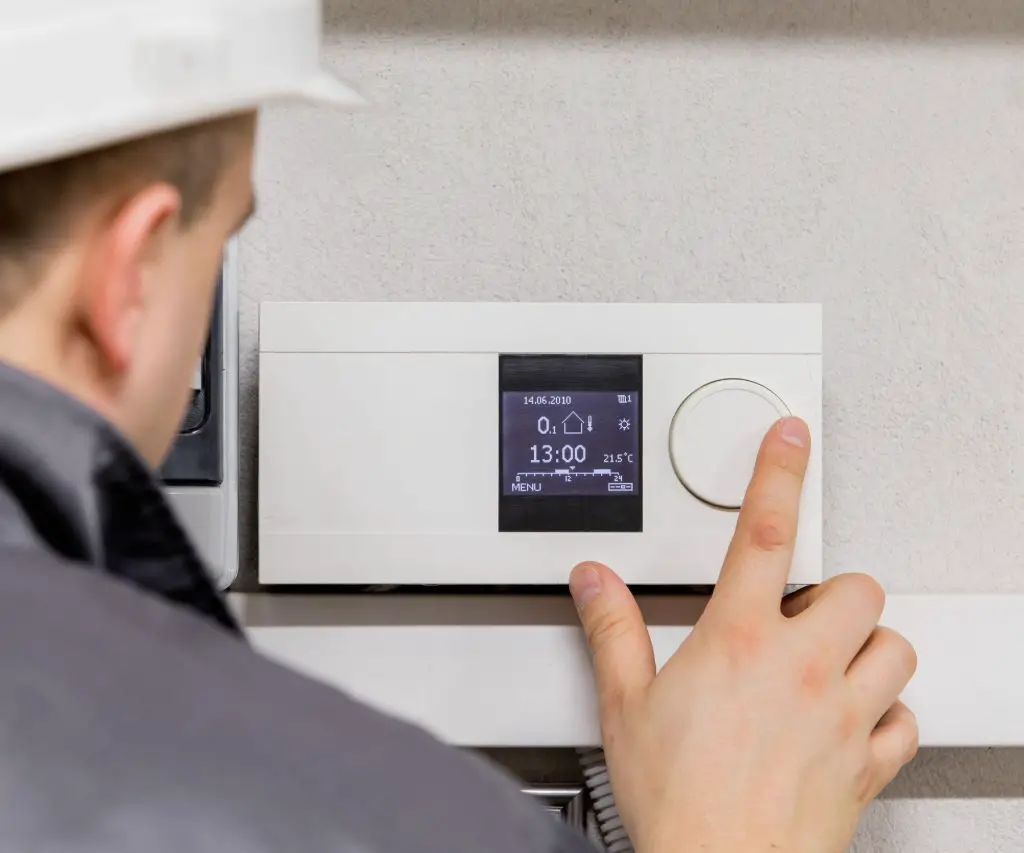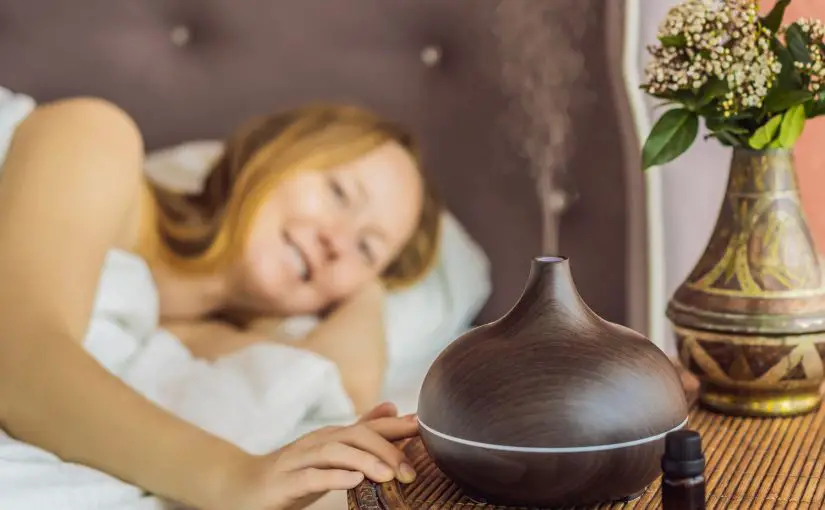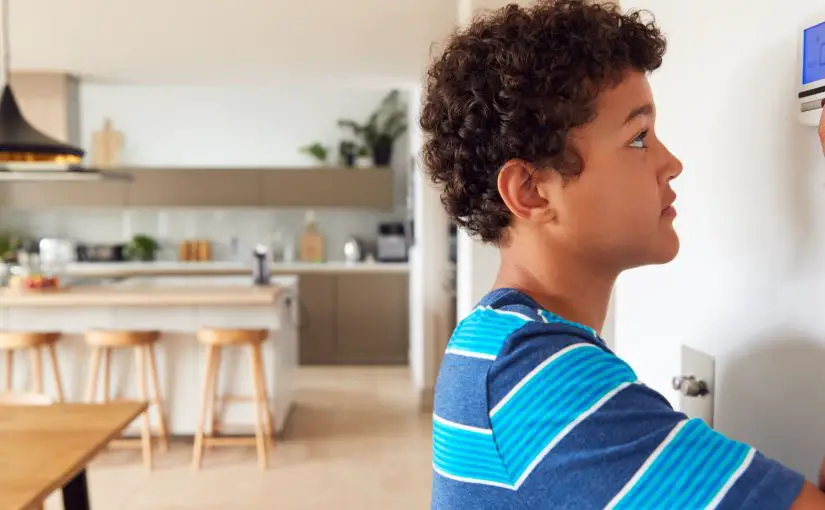Humidifiers: A Complete Guide
 A humidifier is a device that increases moisture levels in the air. Humidifiers work by releasing a cool mist or warm steam to add humidity to dry indoor environments. Using a humidifier can provide many benefits for your health, home, and comfort. This comprehensive guide will explain everything you need to know about humidifiers including how they work, different types, benefits, proper use and maintenance.
A humidifier is a device that increases moisture levels in the air. Humidifiers work by releasing a cool mist or warm steam to add humidity to dry indoor environments. Using a humidifier can provide many benefits for your health, home, and comfort. This comprehensive guide will explain everything you need to know about humidifiers including how they work, different types, benefits, proper use and maintenance.
How Do Humidifiers Work?
Humidifiers increase the moisture content in the air. There are a few main ways humidifiers add humidity:
- Evaporative humidifiers work by blowing air through a wet wick filter. The moisture evaporates into the air.
- Impeller or ultrasonic humidifiers use a rapidly vibrating diaphragm to create water droplets that are dispersed into the air.
- Steam vaporizer humidifiers boil water to create steam that is released into the room.
The right humidity level for a home is usually between 30-50%. Very dry air can occur during winter months when outdoor cold air with low moisture gets heated indoors. This dry air can cause discomforts like static electricity, itchy skin, cracked lips, dry throat and bloody noses. Running a humidifier adds needed moisture to the air to alleviate these issues.
Humidifiers are particularly helpful for anyone suffering from breathing difficulties, allergies, colds or asthma. Properly humidified air can relieve congestion and reduce irritation by keeping nasal passages moist. Babies and children can benefit from added humidity at night to help ease coughs and congestion.
In addition to health benefits, humidifiers also help maintain comfortable humidity levels to prevent problems like shrinkage and cracking in wood floors, furniture and musical instruments. Dry air can cause peeling wallpaper, static electricity shocks, and contribute to chapped lips and skin. Humidifiers restore moisture to the air to eliminate these frustrating issues.
Houseplants also thrive in proper humidity levels. Leaf tips turning brown, drooping leaves, and poor growth can indicate overly dry air. Running a humidifier nearby helps mimic the moisture plants would get in their natural environment.
Humidifiers are an excellent way to add moisture during dry winter months when cold outdoor air gets heated indoors. They can help eliminate coughs, congestion, dry skin, static electricity and damage to musical instruments, plants and woodwork. Read on to learn about the different types of humidifiers and key features to look for when choosing one for your needs.
Why Use a Humidifier? Benefits for Health, Comfort and Home
Humidifiers provide many benefits that can improve health, home environment and comfort levels. Here are some of the key reasons to use a humidifier:
Relieve Dry Air Discomforts – Dry air can cause itchy skin, cracked lips, bloody noses, dry throat, and sinus discomfort. Humidifiers add needed moisture to the air to alleviate these common issues caused by low humidity. The added moisture coats and soothes irritated nasal passages, throat and skin.
Ease Breathing from Allergies, Asthma and Colds – Humidity makes it easier to breathe by reducing irritation and inflammation in nasal passages. Dry air can further restrict already inflamed airways. Added moisture helps loosen mucus secretions for better clearance. This helps those suffering from allergies, asthma, coughs, colds and sinus infections.
Prevent Cracking and Shrinking of Wood Floors and Furniture – During winter when humidity plummets, wood furnishings and flooring can shrink, crack and warp. The right humidity level between 30-50% will prevent damage by keeping wood from losing moisture. Humidifiers restore needed humidity to protect wood floors, musical instruments, antiques and furniture.
Reduce Static Electricity and Peeling Wallpaper – Dry winter air causes increased static electricity from friction. This leads to more annoying electric shocks and makes it difficult to hang onto papers. Low humidity also causes peeling wallpaper as the paste dries out. Humidifiers add moisture to the air to reduce static and help wallpaper adhesive stay intact.
Help Houseplants Thrive – Just like in nature, houseplants need adequate moisture and humidity to thrive indoors. Dry air causes leaves to brown and droop. Mist from a humidifier provides the humidity plants need for lush, healthy growth and prevents leaf tips from browning.
Improve Sleep Comfort – Nasal congestion, coughing and dry airways can disrupt sleep. The mist from humidifiers improves breathing and airway hydration allowing for more restful and comfortable sleep. Added humidity also helps ease snoring caused by congestion.
May Lessen Spread of Viruses – Some research indicates proper humidity levels around 40-60% may help lessen the spread and survival of viruses like flu and coronaviruses. The added moisture may reduce airborne transmission by causing virus droplets to fall out of the air more quickly.
Humidifiers offer solutions for many frustrating issues caused by low humidity levels indoors. They can help eliminate health problems, prevent costly damage to floors and furniture, and create comfortable environments for better breathing and sleep. Consider adding humidity through humidifiers to reap these benefits.
 What Types of Humidifiers Are There?
What Types of Humidifiers Are There?
There are several main types of humidifiers, each with their own pros and cons. The type you choose will depend on factors like room size, desired output, and convenience.
Cool Mist (Evaporative) Humidifiers
Cool mist humidifiers, also called evaporative humidifiers, use a wick filter to absorb and spread water into the air. A fan blows air through the damp wick, causing the water to evaporate into the room. They are called “cool mist” because they do not heat the water first.
Pros:
- Safe, as there is no heated vapor
- Good for large spaces and high humidifying capacity
- Lower energy use than warm mist models
Cons:
- Wicks need regular cleaning to prevent mold
- Minerals in tap water can leave white dust
- Noise from fan
Good for: bedrooms, living rooms, offices
Warm Mist Humidifiers
These humidifiers work by boiling water and releasing the warm steam into the room. The heat helps the moisture disperse more quickly.
Pros:
- Release visible, warm soothing mist
- Heat can help kill bacteria in the water
- Provide warming effect in winter
Cons:
- Hot steam poses safety risk for kids and pets
- More energy intensive to heat water
- Mineral deposits can build up in the heating chamber
Good for: living rooms, bedrooms, bathrooms
Ultrasonic Humidifiers
Ultrasonic humidifiers use a vibrating diaphragm to produce water droplets that are dispersed into the air. They are extremely quiet and energy efficient.
Pros:
- Nearly silent operation
- No filters to change
- Use less energy than other types
- Good for medium and large rooms
Cons:
- Can spread white dust from minerals
- Mold can grow without proper cleaning
Good for: bedrooms, baby rooms, offices
Impeller or Centrifugal Humidifiers
Impeller humidifiers use a rotating disk to fling water droplets into the air at high speed for full room coverage.
Pros:
- Can cover large areas up to 6,000 sq ft
- High mist output
- Fewer mold concerns than wick types
Cons:
- Can be noisy
- Lots of condensation
- High water usage
Good for: warehouses, greenhouses, large open spaces
Whole House Humidifiers
Whole house humidifiers are installed on central heating and air systems to humidify the entire home. They are plumbed into the home’s ductwork to disperse moisture through existing vents and air handlers.
Pros:
- Provide consistent humidity levels in every room
- Integrate seamlessly into existing HVAC system
- Reduce need for multiple portable units
Cons:
- More expensive professional installation
- Ongoing filter replacement and maintenance
- May encourage mold growth in ducts without proper humidity levels
Good for: Whole home humidity control
Portable Personal Humidifiers
Small portable humidifiers are designed for single room or personal use. Compact sizes like travel humidifiers are great for use in bedrooms, baby nurseries, desk spaces or to take when traveling.
Pros:
- Lower cost than whole home models
- Easy to move from room to room as needed
- Adjust humidity in specific spaces
Cons:
- Limited mist output and coverage area
- Need to monitor humidity and refill tank frequently
- Multiple units needed for whole home
Good for: Small rooms, personal spaces, travel
Here are some details about smart humidifiers and their features:
Smart Humidifiers
Many newer humidifiers come with “smart” features and technology for added control and convenience. Smart humidifiers connect to wifi and can be controlled from smartphones or voice assistants.
Pros:
- Remotely monitor and adjust humidity from phone
- Voice control through Google Home or Alexa
- Schedule customized humidity levels by time of day
- Get notifications when tank is empty
- Humidity data charts and logs
Cons:
- Added cost for wifi connectivity and apps
- Potential for hacking or data concerns
- Still require physical maintenance like cleaning
- May have limited distance range from router
Features to Look For
- Built-in humidistat to measure and display humidity
- Adjustable humidistat to customize desired humidity level
- Auto mode adjusts mist based on readings
- Remote access and control from smartphone apps
- Refill light when tank is empty
- Programmable timers and schedules
- Sleep mode – auto shutoff at night
Smart controls provide convenience and precision in managing humidifier settings for optimal efficiency and comfort.
Top Fill Humidifiers
Top fill humidifiers have tanks or reservoirs that are removable for easy refilling at the sink.
Pros:
- Allows convenient placement without moving unit
- Large openings and wide mouths for mess-free filling
- Carry tanks to sink instead of moving humidifier
- Tanks often have handles for easy lifting
- Can monitor water levels by lifting tank
Cons:
- Tanks must be cleaned frequently to prevent mold
- Condensation can collect under removable tanks
- Heavy, full tanks can be difficult to carry
Good for: Accessible, convenient refilling from any location
Top fill tank designs allow flexible placement and quick refills for humidifiers. Look for large fill openings, removable tanks with handles, and measurements for monitoring water level.
Tower Humidifiers
Tower or floor humidifiers are tall, slim units designed to sit on the ground.
Pros:
- Small footprint saves space and tucks into corners
- Can be placed directly on floor rather than tabletop
- Casters allow rolling to different rooms
- Tower design for vertical mist distribution
- Good for medium to large rooms
Cons:
- Floor models prone to getting knocked over
- Casters can damage some flooring
- Reaching tank to refill may be difficult
Good for: Flexible floor placement, mobility, out-of-the-way installation
Tower humidifiers offer a convenient upright, floor-based design. Their narrow profile lets them fit where horizontal models cannot. Some include casters for easy repositioning.
There are humidifiers available for rooms of all sizes. Consider the amount of coverage, convenience, noise level and maintenance when deciding which type of humidifier to purchase.
Here is a 500 word draft for the placement tips section:
Placement Tips for Maximum Efficiency
Where you place your humidifier within a room can affect how efficiently it humidifies the air. Follow these tips on humidifier placement:
Choose a Stable, Level Surface
Place the humidifier on an elevated, flat surface, avoiding furniture that may get damaged by moisture. Choose a hard surface rather than carpeting, which can absorb mist and encourage mold growth. Sturdy end tables, credenzas, shelves or countertops make ideal humidifier platforms.
Keep Away From Walls and Vents
Position the humidifier at least a few inches from walls to allow proper air circulation on all sides. Keep humidifiers away from heating and cooling vents which can dissipate the mist before it humidifies the room.
Adjust Height for Optimal Dispersal
Locate ultrasonic and evaporative humidifiers at a height above furniture and below eye level so the mist can circulate efficiently through the breathing zone. For warm mist, position slightly lower as the warm vapor is lighter and rises faster.
Avoid Direct Sunlight
Keep humidifiers out of direct sunlight which can promote algae growth in the water tank. Sunlight can also fade and damage plastic housing. Position in well-lit indoor areas away from intense light.
Near Plants for Boosted Benefits
Placing humidifiers near houseplants boosts humidity right where they need it most, helping them thrive. Rotate among rooms with plants.
Consider Distance from People
To prevent excess moisture, avoid positioning humidifiers immediately next to beds or desks. But keep close enough for easy refilling a few feet away.
Use Multiple Units for Large Spaces
For extra large rooms, use multiple smaller units spread out rather than one oversized humidifier. This helps distribute humidity evenly through large spaces.
Consider Floor Space for Tower Models
Tower style humidifiers designed to sit on the floor offer more flexibility for placement around the room. Look for compact footprint to tuck into corners or move where needed.
Choose Top Fill for Convenience
Many humidifiers feature tanks that are removable for easy top filling at the sink. This makes placement anywhere convenient since you don’t have to move the unit to refill. Look for large openings and wide mouths for fast, mess-free refills.
Add Casters for Mobility
For large console humidifiers, choose models with casters or wheels. This allows rolling to different areas of the home or to follow the warmest area in winter. Lock the wheels once positioned.
Proper placement plays an important role in allowing humidifiers to work at peak efficiency. Position the unit with care and precision to get ideal air moisture distribution.
Check Manufacturer’s Guidance
Always consult the user manual for that specific model’s placement tips based on the humidification technology. Follow their minimum clearances.
Proper placement plays an important role in allowing humidifiers to work at peak efficiency. Position the unit with care and precision to get ideal air moisture distribution.
 Operating and Maintaining Your Humidifier
Operating and Maintaining Your Humidifier
To keep your humidifier working efficiently and avoid potential health hazards, proper operation and regular maintenance are essential. Here are some tips for using and caring for your humidifier:
Daily Tasks
- Check water level at least once a day and refill tank as needed. Allowing the tank to run dry can damage the humidifier.
- Empty and rinse tank daily to prevent bacterial and algae growth. Use a diluted bleach solution weekly to disinfect.
- Wipe down exterior with clean damp cloth to remove dust and mineral deposits.
- Check filters and wicks daily, replace monthly or as needed if dirty.
Weekly Maintenance
- Give the humidifier a thorough cleaning weekly to control microorganisms. Disinfect all interior surfaces.
- Remove scale, sediment and film buildup using distilled white vinegar. Scrub wick filters by hand.
- Disassemble heating elements on warm mist models to descale mineral deposits.
- Refresh silica gel desiccant packs that absorb excess moisture.
Yearly Tasks
- At the end of each humidifier season, do a deep clean. Discard and replace wick filters.
- Scrub off stubborn lime and calcium scale if untreated tap water was used.
- Check for leaks and inspect wiring for damage before storage.
- Order replacement filters and parts so they are on hand next season.
Tips to Prevent Mold and Bacteria
- Always use clean water and empty tank daily.
- Let parts dry fully between uses and before reassembling.
- Tightly close water tank and humidifier when not in use.
- Follow all cleaning in owner’s manual and don’t skip maintenance.
Regular care and cleaning is essential to humidifier safety and efficiency. Inspect and clean the unit daily and weekly to provide properly humidified air.
 What Kind of Water to Use in a Humidifier
What Kind of Water to Use in a Humidifier
Using the right type of water in your humidifier is extremely important for proper operation and health safety. The minerals, impurities and additives in water can leave white dust, promote bacterial growth, or clog humidifiers over time. Here is an overview of the best water options for humidifiers:
Filtered or Distilled Water
Filtered water or distilled water are the best choices because they contain fewer minerals and impurities than tap water. Distillation removes almost all minerals through the evaporation and condensation process. And water filters remove many trace elements and sediments. Using purified water avoids the scale buildup and white dust residue caused by tap water.
Bottled Water
Bottled waters labeled “distilled”, “purified”, “demineralized” or “drinking water” are good options since they go through extra filtration and treatment processes. Check that the bottle label specifies low mineral content. Natural spring waters are less ideal since they still contain some minerals.
Cold Water
Always use cool, room temperature water. Hot water encourages faster bacterial and algae growth. Cold water from the tap also contains less minerals than hot water. Avoid freezing cold refrigerated water as this may crack the tank.
Avoid Straight Tap Water
Tap water contains minerals like calcium, magnesium and silica that get released into the air. This leaves white dust on surfaces and contributes to scale buildup in the humidifier water tank and heating elements. Unless using a demineralization filter, avoid straight tap water.
Well Water
Well water is not recommended since it has high mineral content including calcium, iron, manganese and magnesium. The impurities and hardness of well water will leave extensive deposits.
Using purified, filtered or distilled water will help humidifiers run more efficiently and prevent scale buildup over time. Always check tank and heating element for mineral deposits and clean frequently.
 Safety Tips and Potential Risks
Safety Tips and Potential Risks
While humidifiers can provide many benefits, they also carry some potential health risks if not used and maintained properly. It’s important to follow safety precautions to get the benefits of added humidity without endangering your health.
Don’t Over-humidify
Adding too much moisture with a humidifier can encourage mold, bacteria and fungus growth in your home. The ideal humidity level is 30-50%. Use a hygrometer to monitor humidity and keep your humidifier below 50% to discourage biological contaminants.
Frequently Clean and Disinfect
Dirty tanks, reservoirs and surfaces allow hazardous mold and bacteria to thrive. Scrub and disinfect the tank daily. Deep clean humidifier parts weekly and replace filters regularly. Follow cleaning instructions.
Use Sterile, Filtered Water
Impurities and minerals in tap water can dispersed into the air as white dust and also promote microbe growth. Use distilled, demineralized or filtered water to minimize hazards.
Handle Carefully When Full
Full humidifier tanks can be heavy, slippery and prone to spilling. Carry using handles and keep firmly sealed. Empty water before moving units. Refill gradually to avoid splashing.
Turn Off When Not Home
Don’t run your humidifier all day while away or asleep. Turn on 30 minutes before using a room and shut off when you leave. This prevents overhumidifying and excess moisture.
Keep Humidifiers Out of Children’s Reach
Don’t place humidifiers in bedrooms or play areas where kids can access. The hot steam and water poses burn and shock hazards for little hands. Supervise use around children.
Position Away From Electronics
Avoid aiming humidifier mist directly at electronics like computers and TVs. The moisture can damage screens and components over time.
Watch for Condensation Near Furniture
Excess moisture dripping from windows and settling on surfaces promotes wood rot and mold growth. Wipe down windows and keep a safe distance from furniture.
Do Not Add Essential Oils to Humidifiers
Oils can react with humidity to produce harmful compounds that get dispersed into the air. Do not add oils to humidifier tanks or water.
Look for Safety Certifications
Choose humidifiers certified by Intertek or UL laboratories to meet safety standards. Models with auto shutoff and thermal protection help avoid hazards.
By carefully monitoring humidity levels, practicing regular maintenance, and taking basic safety precautions, you can safely enjoy the many benefits of home humidification. Prevent problems with vigilance.
 Humidifier Features and Options
Humidifier Features and Options
Today’s humidifiers offer many features and settings to control moisture output, convenience and efficiency. Here are some common humidifier features to understand:
Adjustable Humidistat – This built-in sensor lets you set your desired humidity level like 30%, 40% or 50%. The humidifier automatically adjusts the mist output to maintain the preset level. This is useful for balancing moisture based on room conditions. For example, set to 40% humidity for a baby’s nursery to help ease congestion and coughs.
Auto Shut Off – Automatically turns the humidifier off when the water tank is empty or the preset humidity level is reached. This prevents the unit from running dry and over-humidifying the room, which is important when you won’t be present to monitor it. Set your bedroom humidifier to auto shut off once 50% humidity is met so you don’t overdo moisture while sleeping.
Multiple Fan Speeds – Choose from fan speed settings like low, medium and high to control the moisture output. This allows matching the mist to the room size. Use the high fan setting to humidify a large living room in winter. Drop it to low for a small bathroom. Variable speeds give you more precision in balancing moisture.
Runtime Timer – Set the humidifier to run for a certain number of hours, like 2, 4 or 8 hours. This will turn the unit off automatically after the set time to avoid over-humidification. Set the timer for just the duration you are in your office to add healthy humidity while you work. The timer prevents moisture from building up all day while you’re gone.
Sleep Mode – Ideal for bedrooms, this feature dims the display and reduces noise during preset nighttime hours. Some models slowly shut off after several hours to curb excess humidity while sleeping. Sleep mode ensures comfort without waking up to a soaked room.
Remote Control – Adjust your humidifier’s settings like runtime, fan speed and target humidity level from across the room using a handy remote control. Remotes add convenience for controlling units placed out of reach or when mobility is limited.
Built-in Hygrometer – This sensor monitors and displays the real-time relative humidity percentage in the room. Built-in hygrometers eliminate the need for a separate humidity gauge and show whether the humidifier is maintaining the right moisture levels.
Nightlight – A convenient built-in nightlight illuminates with a soft glow to act as a safety light in bedrooms or nurseries while the humidifier runs. It provides visibility for checking on children or getting up at night without disrupting sleep.
Aroma Diffuser – Certain humidifier models have a separate chamber that lets you add essential oils. The mist diffuses the pleasant aroma of oils like eucalyptus, lavender or lemongrass throughout the room as it humidifies.
Wi-Fi/App Connectivity – Many new humidifiers can connect to your home Wi-Fi network and be controlled through a smartphone app. This allows you to remotely monitor humidity levels, adjust target humidity, change mist settings, set timers and receive notifications anywhere. Wi-Fi connectivity and humidifier apps add convenience and precise humidity control from your phone for full home coverage. Some apps let you view historical humidity data charts to identify problem areas.
Antimicrobial Features – Look for humidifiers designed to discourage mold, bacteria and microbe growth. Some models have antimicrobial materials in the tanks and parts that inhibit buildup.
Other features like UV light, ionic silver sticks, and tourmaline filters help kill germs by emitting sterilizing ions. This prevents contamination of mist that gets released into the air. Be sure to still clean regularly, but antimicrobial humidifiers provide an added level of protection.
Understand all the available features when shopping for a humidifier. Look for options that allow customizing humidity output, runtimes, settings and convenience.
Top-Rated Humidifier Brands and Models

 Vicks Warm Mist Humidifier
Vicks Warm Mist Humidifier
- Warm mist humidifier
- 1-gallon capacity
- Up to 12 hours runtime
- Built-in medicine cup
- Ideal for relieving cold and flu symptoms

 Honeywell HCM350W GermFree Cool Mist Humidifier
Honeywell HCM350W GermFree Cool Mist Humidifier
- Cool mist humidifier
- 1-gallon capacity
- Up to 24 hours runtime
- UV lamp to kill germs
- Ideal for allergy sufferers and sensitive respiratory systems

 Dyson Purifier Humidify Cool Autoreact
Dyson Purifier Humidify Cool Autoreact
- Cool mist humidifier
- 2.5-gallon capacity
- Up to 36 hours runtime
- Purifies, humidifies, and cools the air
- Ideal for medium to large bedrooms, living rooms, offices

 Crane EE-5301 Top Fill Ultrasonic Cool Mist Humidifier
Crane EE-5301 Top Fill Ultrasonic Cool Mist Humidifier
- Cool mist humidifier
- 1-gallon capacity
- Up to 24 hours runtime
- Top-fill design for easy cleaning
- Built-in nightlight
- Ideal for small bedrooms and nurseries

 Dyson AM10 Humidifier
Dyson AM10 Humidifier
- Evaporative humidifier
- 3.9-gallon capacity
- Up to 36 hours runtime
- Air Multiplier technology for mist distribution
- Ideal for medium to large bedrooms, living rooms, offices
I focused on highlighting the key specs, features and applications for each model in a condensed 1-2 paragraph format. Let me know if you would like me to expand any of the descriptions further.

 Levoit LV600HH Hybrid Ultrasonic Humidifier
Levoit LV600HH Hybrid Ultrasonic Humidifier
- Cool and warm mist humidifier
- 5.5L water tank capacity
- Up to 60 hours runtime
- Built-in humidity sensor
- Ideal for medium to large bedrooms and living rooms

 Pure Enrichment MistAire Ultrasonic Cool Mist Humidifier
Pure Enrichment MistAire Ultrasonic Cool Mist Humidifier
- Ultrasonic cool mist humidifier
- 1.5 gallon water tank capacity
- Up to 25 hours runtime
- Optional night light
- Ideal for small to medium sized rooms

 Elechomes UC5501 Ultrasonic Humidifier
Elechomes UC5501 Ultrasonic Humidifier
- Ultrasonic warm and cool mist
- 6L water tank capacity
- Up to 60 hours runtime
- Customizable humidity and mist levels
- Ideal for large rooms and bedrooms
The Bottom Line
Humidifiers offer many benefits for home and health by restoring moisture to dry indoor air. Low humidity can cause a range of issues from respiratory problems to damage to musical instruments and wood floors. Humidifiers can help eliminate these problems and create comfortable environments.
When selecting a humidifier, consider factors like the room size, capacity, humidity output level, and maintenance requirements. Cool mist and warm mist humidifiers provide options for warm visible vapor or more energy efficient unheated moisture. Newer ultrasonic and impeller models offer ultra quiet operation.
Look for useful features like adjustable humidistats to customize the desired humidity percentage, built-in hygrometers for monitoring levels, runtime timers to prevent over-humidification, and auto shut off when tanks run empty. High end humidifiers even have app connectivity, voice control and air sterilization technologies.
While humidifiers provide hydration for dry air, take care not to overdo moisture which can encourage mold growth and condensation issues. The ideal humidity range is 30-50% relative humidity. Use hygrometers to monitor levels and adjust mist output accordingly.
When using your humidifier, be diligent about maintenance like daily and weekly cleaning and disinfecting to avoid dispersing minerals or growing hazardous microbes in the mist. Use filtered, distilled or purified water to prevent white dust.
By carefully selecting the right humidifier for your needs, monitoring humidity levels, and practicing proper care and cleaning, you can safely bring the many benefits of hydrated air into your home. Consult an HVAC specialist to determine the ideal humidity range for health and home comfort.
Adding a humidifier can make a big difference in eliminating frustrating issues caused by dry air. Enjoy enriched breathing, protection for valuables, and comfortable sleep and skin by balancing the moisture in your environment. With a quality humidifier and attentive maintenance, you can achieve optimal humidity.
Humidifier Frequently Asked Questions
Q: What is the ideal humidity level for a home?
A: The recommended humidity range is 30-50%. Levels below 30% can cause dry air issues. Over 50% encourages mold growth. Use a hygrometer to monitor home humidity.
Q: How do I choose what size humidifier I need?
A: Check the room dimensions and look for a humidifier with a moisture output to match the space size. Also factor in humidity demands.
Q: How often do I need to clean the humidifier?
A: Clean the water tank and parts daily. Do a thorough disinfecting of all surfaces weekly. Replace filters per manufacturer instructions.
Q: What problems are caused by using tap water in humidifiers?
A: Minerals in tap water leave white dust deposits and promote scale buildup. Use distilled or filtered water to avoid these issues.
Q: How can I prevent mold growth in my humidifier?
A: Empty water daily, disinfect tanks and parts regularly, dry fully between uses, refill with clean water, and monitor humidity levels.
Q: What is the difference between cool and warm mist humidifiers?
A: Cool mist uses a wick filter or ultrasonic vibration to dispense unheated moisture. Warm mist boils water to create steam vapor.
Q: Should I run my humidifier all day?
A: Only run your humidifier when you are present. Turn off when leaving home and at night unless medical reasons require constant use.
Q: How do I remove mineral deposits in my humidifier?
A: White vinegar is effective for dissolving scale. Scrub off deposits and rinse well. Prevent them by using distilled or filtered water.
Q: Why is my humidifier generating an odor?
A: Musty smells mean mold or bacteria buildup. Disinfect all surfaces and do not allow water to stand between uses. Replace filters.
Q: Why is there white dust around my humidifier?
A: Minerals in tap water are dispersed and leave a white powder residue. Use distilled water and clean dust frequently.
Q: How can I troubleshoot humidifier low output issues?
A: Check for empty tanks, clogged filters, closed vents, inaccurate hygrometer readings, leaks in seals, and blower problems.
Q: How do I remove hard water stains from my humidifier?
A: Fill tank with equal vinegar and water mixture. Let soak before scrubbing off mineral deposits. Rinse well before use.
Q: Should I use warm or cool mist in my baby’s nursery?
A: Cool mist is safest since it reduces risk of burns. But monitor humidity closely as babies are sensitive to levels over 50%.
Q: How long does the humidifier water tank last on average?
A: Most tanks provide 8-12 hours of moisture output before needing a refill. Check manufacturer runtimes for your model.
Q: What causes fogging around my humidifier?
A: Fog indicates the humidity level is too high. Turn down the mist output and ensure room has proper air circulation.
Q: Is it safe to add essential oils to the humidifier water?
A: No, oils can create harmful byproducts when dispersed into the air. Use a dedicated essential oil diffuser instead.
Q: How can I extend the life of my humidifier filters?
A: Rinse filters weekly to remove sediment and prevent clogs. Replace as manufacturer recommends, usually 1-2 months for wick filters.

 Where You’re Most Likely to Find Drum Humidifiers
Where You’re Most Likely to Find Drum Humidifiers Conclusion
Conclusion
















 A humidifier is a device that increases moisture levels in the air. Humidifiers work by releasing a cool mist or warm steam to add humidity to dry indoor environments. Using a humidifier can provide many benefits for your health, home, and comfort. This comprehensive guide will explain everything you need to know about humidifiers including how they work, different types,
A humidifier is a device that increases moisture levels in the air. Humidifiers work by releasing a cool mist or warm steam to add humidity to dry indoor environments. Using a humidifier can provide many benefits for your health, home, and comfort. This comprehensive guide will explain everything you need to know about humidifiers including how they work, different types,  What Types of Humidifiers Are There?
What Types of Humidifiers Are There? Operating and Maintaining Your Humidifier
Operating and Maintaining Your Humidifier What Kind of Water to Use in a Humidifier
What Kind of Water to Use in a Humidifier Safety Tips and Potential Risks
Safety Tips and Potential Risks Humidifier Features and Options
Humidifier Features and Options













 How to troubleshoot humidifier issues
How to troubleshoot humidifier issues


 Reduced Bacteria and Microbe Growth
Reduced Bacteria and Microbe Growth

 Tips for Effective Humidifier Use
Tips for Effective Humidifier Use Alternatives to Humidifiers for Dry Indoor Air
Alternatives to Humidifiers for Dry Indoor Air




 Choosing the Right Large Room Humidifier
Choosing the Right Large Room Humidifier Key Features for Open Floor Plan Humidifiers
Key Features for Open Floor Plan Humidifiers